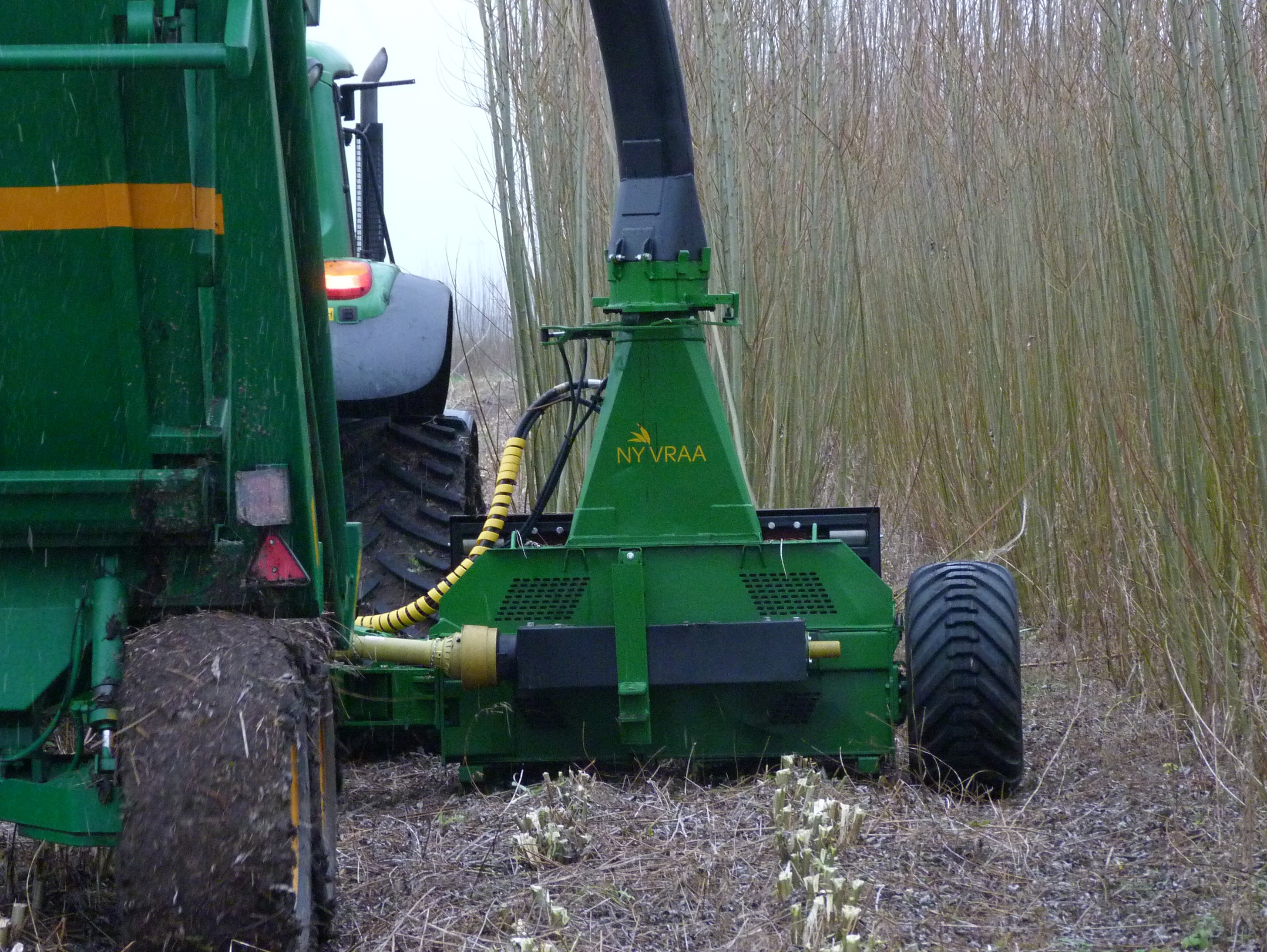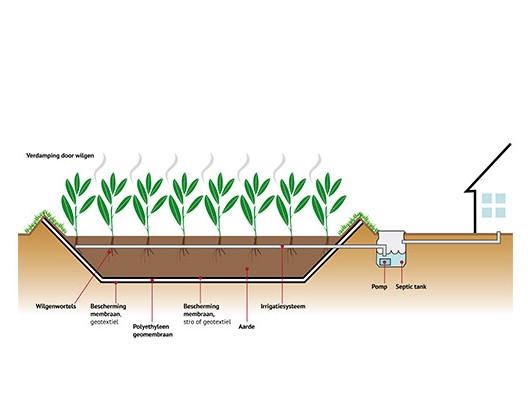
Willow plantations have been used to purify water in Scandinavia and the United States for years. This environmentally friendly and financially attractive method of water purification also offers opportunities in The Netherlands, including for the food industry.
Willow plantations are used worldwide to produce biomass, which is then utilised to generate renewable energy. In addition, willows are known for their power to purify wastewater. This method is widely used in Sweden, for example. Furthermore, willow plantations are interesting habitats for various species of plants and animals. On behalf of Marleen van den Ham (InnovatieNetwerk), Martijn Boosten (Stichting Probos) and Adrie Otte, Bioniers ([email protected]) compiled an overview of the experiences of using willow plantations for water purification and explored the potential of this method from a Dutch perspective.
The willows are irrigated with wastewater in the growing season. It is possible to set up the plantations in such a way that all the water evaporates, thus no longer requiring any water to be discharged. The trees absorb the nutrients and impurities such as heavy metals from the water and store them in their biomass. A one-hectare plantation comprises 15,000 willow trees. The shoots are harvested every two, three or four years and new shoots then grow. This cycle of harvesting and regrowth can be repeated for at least 20 years. Moreover, the biomass production can be fully mechanised and the biomass can subsequently be sold to wood-fired power plants.
Willows plantations offer potentially interesting opportunities because land, which is increasingly scarce, is used fourfold and because they contribute to several policy objectives:
A four-year EU study concluded that willow plantations for biomass production in combination with water purification are an attractive proposition and should be further developed on a larger scale.
'Harvesting with the ‘energy harvester’
Closer investigation has revealed that there are countless potential applications in The Netherlands. For example, willows could be used to treat effluent from sewage treatment plants, and they could also purify industrial wastewater. For a company with an average discharge volume, 1,300 m2 of willows would be enough to treat the wastewater. Industrial wastewater with an excess of nutrients is particularly suitable for willow-based purification. This represents opportunities for the food and drinks industry, such as potato processors and breweries. Up until now, no Dutch food and drinks companies have any experience with willow-based purification. The closest example is in Orchies, in northern France, where chicory processor Leroux has been using willows to purify its industrial wastewater since 1998. At the moment, reed beds are the most popular method for natural wastewater purification in The Netherlands, but reed beds do not produce usable biomass. The research by Probos and Bioniers reveals that willow-based purification is the most financially attractive of all the ‘green’ water purification systems in use so far.

Now, the next step is to set up one or more pilots in The Netherlands in order to demonstrate the potential of this method in practice. A number of pilots are already being prepared for sewage treatment plants, and a suitable location for a pilot for the purification of industrial wastewater is currently being sought. If any companies believe that they have a suitable location and are interested in taking part in a pilot, they are welcome to contact the authors.
The report on new opportunities for sustainable biomass: willow-based wastewater purification (‘Nieuwe kansen voor duurzame biomassa: afvalwater zuiveren met wilgen’) (Otte, A.J. & M. Boosten, 2014) can be downloaded at www.bioniers.nl and www.innovatienetwerk.org (in Dutch only).
Source: Foto: Martijn Boosten - Illustratie: Gebca Velema